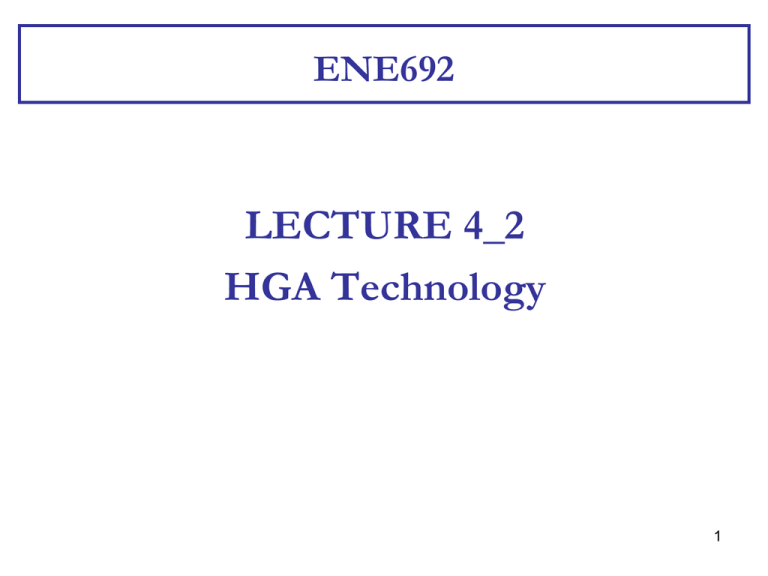4_2 - web page for staff
advertisement

ENE692 LECTURE 4_2 HGA Technology 1 Basic HGA Technology • HGA assembly process • HGA process control • Suspension design and function • Slider design and function 2 HGA Assembly process 3 Typical HGA process flow 4 HGA mechanical controls 5 HGA alignment 6 HGA pre-load 7 Motivations from Gram load adjustment • Increasing Magnetic Recording Density requires lower and tighter flying height distribution. • Suspension Preload is a significant contributor to the flying height. Even more important for femto sliders. • HGA (Head Gimble Assembly) and HSA (Head Stack Assembly) processes can produce significant shift of the mean and sigma of gram load and flying height. • Gram load adjust can be used to compensate for the deviations caused by crown, camber, etch depths, PSA, stacking tolerances etc. on the flying heights. 8 Motivations from Gram load adjustment Crown (C) is the maximum separation between the cylindrical contour along the flying direction and an imaginary plane drawn between leading and trailing edges of the ABS. Camber has a similar definition in the perpendicular direction between the two sides of the slider. 9 How does the gram load adjustment work? 10 HGA PSA/RSA 11 Gimbal bond strength 12 Fly Height 13 Fly Height 14 Impact of contamination 15 Suspension design and function 16 Gimbal strength testing 17 Stress due to buckling and pitch 18 Slider components 19 Slider components • Air bearing • Read/Write circuit • Trailing edge • Leading edge 20 Air bearing/fly model 21 Fly height history 22 Effect on Fly height 23 Effect on Fly height 24 Air bearing/fly model 25 Air bearing/fly model 26 Air bearing/fly model 27 Performance prediction of air bearing 28 Sensitivity analysis 29 Take-off profile 30 Unload Footprints 31 Head-Disk Spacing Budget 32











